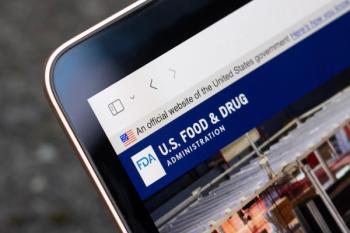
NCCN Adds Oral Decitabine, Cedazuridine Combo to MDS Guidelines
Inqovi is an orally administered, fixed-dose combination of the DNA hypomethylating agent, decitabine, and cedazuridine, an inhibitor of cytidine deaminase.
The National Comprehensive Cancer Network recently updated its Clinical Practice Guidelines in Oncology for Myelodysplastic Syndromes (MDS) to include the combination of decitabine and cedazuridine (Inqovi) as a category 2a recommendation for the treatment of adult patients with intermediate- and high-risk MDS.
Inqovi is an orally administered, fixed-dose combination of the DNA hypomethylating agent, decitabine, and cedazuridine, an inhibitor of cytidine deaminase.
The
The incidence of MDS in the United States is estimated to be10,000 cases annually.
Oral decitabine and cedazuridine is given in 35-mg and 100-mg tablets for patients with clinically significant cytopenias or increased marrow blasts, significant anemia, or are transplant candidates.
Specifically, the combination is indicated for previously untreated and untreated de novo and secondary MDS with the following subtypes: refractory anemia, refractory anemia with ringed sideroblasts, refractory anemia with excess blasts, and chronic myelomonocytic leukemia (CMML). The regimen is also indicated for patients classified as intermediate-1, intermediate-2, and high-risk per the International Prognostic Scoring system (IPSS)
"The addition of Inqovi to the Clinical Practice Guidelines in Oncology for Myelodysplastic Syndromes will further inform health care providers of a new oral treatment option," said Karin Blakolmer, senior vice president and head of medical affairs, Taiho Oncology, in a statement. "As the first orally administered hypomethylating agent for MDS, and an important alternative to multiple monthly intravenous infusions, Taiho Oncology believes that Inqovi will help address unmet treatment needs for patients who may currently have limited access to in-office intravenous therapy.”
The regimen was examined in 2 open-label, randomized, crossover trials. The first, ASTX727-01-B, enrolled a total of 80 patients with MDS, including those with intermediate-1, intermediate-2, or high-risk IPSS scores, or CMML. The second trial, ASTX727-02, enrolled 133 patients with either MDS or CMML, including all French-American-British classification criteria and IPSS intermediate-1, intermediate-2, or high-risk prognostic scores.
In both trials, patients were randomized 1:1 to receive 35 mg of oral decitabine plus 100 mg of cedazuridine in cycle 1 and 20 mg/m2 of intravenous (IV) decitabine in cycle 2, or the reverse sequence. Both the oral combination regimen and IV decitabine were given once daily on days 1 through 5 of a 28-day treatment cycle. Starting with cycle 3, all patients received the oral combination regimen once daily on days 1 through 5 of each 28-day cycle until either progressive disease or intolerable toxicity.
Results from the ASTX727-01-B trial showed that the combination resulted in a complete response (CR) rate of 18% (95% CI, 10-28) and a median duration of CR of 8.7 months. Of 41 patients who were dependent on red blood cell (RBC) and/or platelet transfusions at baseline, just under half, or 49% (n = 20) became independent during any consecutive 56-day post-baseline period. Of the 39 patients who had been independent of both RBC and platelet transfusions at baseline, 64% (n = 25) remained independent during any consecutive 56-day post-baseline period.
Findings from the ASTX727-02 trial demonstrated a 99% geometric mean ratio of the 5-day cumulative decitabine AUC after 5 consecutive once-daily doses of the oral combination versus IV decitabine (90% CI, 93-106). Twenty-one percent of patients experienced a CR with the regimen (95% CI, 15-29) and a median duration of CR of 7.5 months. Of 57 patients who had been dependent on RBC and platelet transfusions at baseline, 53% (n = 30) achieved independence during the 56-day post-baseline period. Among 76 patients who had been independent of both RBC and platelet transfusions at baseline, 62% remained independent during the 56-day post-baseline period.
Newsletter
Stay ahead of policy, cost, and value—subscribe to AJMC for expert insights at the intersection of clinical care and health economics.








































